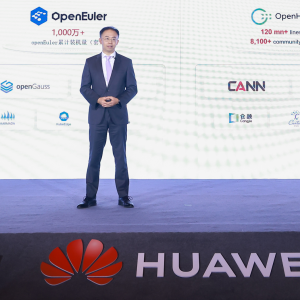Hewlett-Packard Co claims the Visualize graphics accelerators, which are built around Precision Architecture floating point units and fit on top of existing HCRX and CRX48Z boards, give it the best price-performance at eight and 24 planes and the fastest t hree-dimensional graphics with double buffering. The Visualize-8, -24 and -48 graphics accelerators are supported by workstations running HP-UX 9.07. Support for HP-UX 10 is promised by the end of the year. The eight-plane Visualize-8 and 24-plane Visualize-24 are supplied as a single board that fits on top of HCRX-8 or HCRX-24 accelerators, with which they are object code-compatible. The eight-plane combination costs $5,500, 24 planes go from $7,500 – existing HCRX-8Z and HCRX-24Z users can upgrade for $1,500. Video out is an option. The two perform up to 87 PLBwire93, 144 PLBsurf93, 15.4 Xmark93 and 315,000 light-shaded three-dimensional quadrilaterals per second on the J210 running HP-UX 9.07. Hewlett-Packard, which has estimated a set of performance numbers that Silicon Graphics Inc doesn’t report (to a claimed 15% margin of error), says a $26,800 715/100 workstation with Visualize-24 performs from 1.25 to two times as fast as a $40,000 200MHz Silicon Graphics Indigo2 Extreme, across a range of graphics b enchmarks, where both are configured with 64Mb RAM, 2Gb disk and 20 monitor. The double-buffered Visualize-48 incorporates three accelerators and performs up to 236 PLBsurf93, 182 PLBwire93, 16.7 Xmark93 and 925,000 three-dimensional light-shaded quadrilaterals per second on the J210. It costs from $16,000 – upgrades from HCRX and CRX-48Z graphics are from $2,000, an additional texture mapping board is from $5,000, and a video out board is an option. In a $61,600 J210, Visualize-48 is claimed to be 2.5 times quicker than a $57,500 Silicon Graphics Inc Power Extreme, when both are configured with 64Mb memory, 2Gb disk and 20 monitor. All Visualize boards are available next month. Hewlett admits it lags behind Sun Microsystems Inc’s unit volumes in technical markets, but claims better revenue shipments, believing that it is insulated from the encroachment of top-tier personal computers which now compete head-to-head with Sun’s pricing model.






